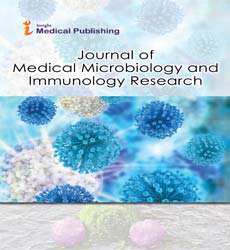ISSN : 2634-7164
Journal of Medical Microbiology and Immunology Research
Microbial Etiology of Pneumonia: - Epidemiology, Diagnosis and Resistance Patterns
Abstract
Globally, pneumonia is a serious public health concern and a major cause of mortality and morbidity. Despite advances in antimicrobial therapies, microbiological diagnostic tests and prevention measures, pneumonia remains the main cause of death from infectious disease in the world. An important reason for the increased global mortality is the impact of pneumonia on chronic diseases, along with the increasing age of the population and the virulence factors of the causative microorganism. The increasing number of multidrug-resistant bacteria, difficult-to-treat microorganisms, and the emergence of new pathogens are a major problem for clinicians when deciding antimicrobial therapy. A key factor for managing and effectively guiding appropriate antimicrobial therapy is an understanding of the role of the different causative microorganisms in the etiology of pneumonia, since it has been shown that the adequacy of initial antimicrobial therapy is a key factor for prognosis in pneumonia. Furthermore, broad-spectrum antibiotic therapies are sometimes given until microbiological results are available and de-escalation cannot be performed quickly. This review provides an overview of microbial etiology, resistance patterns, epidemiology and microbial diagnosis of pneumonia.
Open Access Journals
- Aquaculture & Veterinary Science
- Chemistry & Chemical Sciences
- Clinical Sciences
- Engineering
- General Science
- Genetics & Molecular Biology
- Health Care & Nursing
- Immunology & Microbiology
- Materials Science
- Mathematics & Physics
- Medical Sciences
- Neurology & Psychiatry
- Oncology & Cancer Science
- Pharmaceutical Sciences
